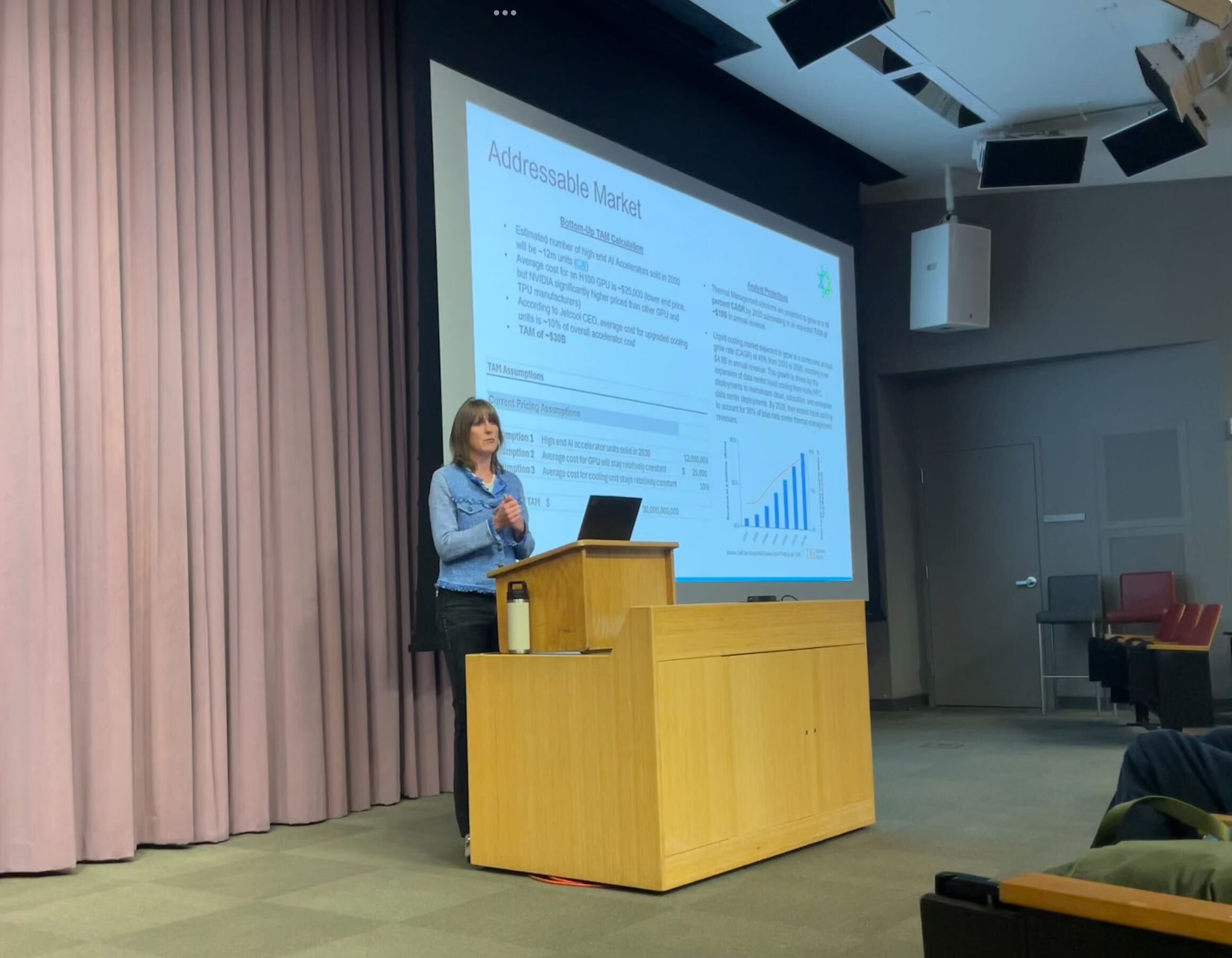US will dodge recession, but Trump’s policies will slow economic growth: Report – USA Today

Economic Policy Analysis and Sustainable Development Goal Implications
A recent economic analysis by Moody’s Analytics indicates that the current administration’s economic policies are projected to significantly slow U.S. growth and increase inflation over a four-year term. While a full recession or “stagflation” is not anticipated, the policies present substantial challenges to the achievement of several Sustainable Development Goals (SDGs), particularly those related to economic stability, social equity, and global cooperation.
Key Economic Projections
- Economic Growth (SDG 8): Policies are expected to reduce annual economic growth by an average of 0.4 percentage points. The economy is forecast to expand by an average of 1.7% annually, down from a post-recession average of 2.3%.
- Employment (SDG 8): The unemployment rate is projected to peak at 4.7% in 2027. Without these policies, an estimated 885,000 additional jobs would have been created, and unemployment would have remained around 4%.
- Inflation: Policies are expected to push inflation up by nearly 0.5 percentage points per year, with annual inflation averaging 2.6% and peaking at 3.1% in 2026. This delays reaching the Federal Reserve’s 2% target.
Impact on Social and Economic SDGs
SDG 8: Decent Work and Economic Growth
The administration’s policies create a mixed but ultimately negative impact on SDG 8. While tax cuts and increased government spending aim to stimulate parts of the economy, these are more than offset by negative factors.
- Tariffs: Import tariffs are identified as the largest single drag on economic growth and the primary contributor to inflation. By increasing consumer prices, they reduce purchasing power and consumption, which constitutes 70% of economic activity.
- Immigration Crackdown: Reduced immigration curtails the labor supply, particularly in sectors like construction, agriculture, and hospitality. This drives up wages and prices while simultaneously reducing the consumer base, thereby hindering overall economic growth.
- Federal Layoffs: The planned layoffs of federal workers directly impact employment levels and can disrupt the provision of public services, affecting institutional stability and economic confidence.
SDG 1, 2, 3 & 10: Poverty, Hunger, Health, and Reduced Inequalities
Significant policy actions directly challenge progress on social welfare and equality goals.
- Cuts to Social Services: Reductions in funding for programs such as Medicaid and food stamps directly threaten progress on SDG 3 (Good Health and Well-being), SDG 2 (Zero Hunger), and SDG 1 (No Poverty). These cuts disproportionately affect vulnerable populations, exacerbating inequalities contrary to the aims of SDG 10.
- Immigration and Deportations: The focus on deportations and border constraints impacts SDG 10 (Reduced Inequalities) by targeting a specific demographic. The reduction in the immigrant population also has secondary economic effects that can impact community welfare. Initial forecasts of 1 million deportations per year have been revised to an annualized pace of 600,000 due to logistical challenges.
- Tax Cuts: While the budget bill includes tax relief on tips and overtime, the broader impact of tax policy on income distribution remains a key factor in assessing progress toward SDG 10.
SDG 17: Partnerships for the Goals
The administration’s trade policy, characterized by high tariffs, has significant implications for international cooperation.
- Trade Tariffs: High double-digit tariffs on steel, aluminum, foreign cars, and Chinese imports, along with 10-20% tariffs on goods from partners like Japan, South Korea, and the UK, strain global trade relationships. This approach runs counter to the collaborative spirit of SDG 17, which emphasizes global partnerships for sustainable development.
- Retaliation: While retaliation from trading partners has been more restrained than initially forecast, the tariff-based strategy continues to pose a risk to international economic stability and cooperation.
Analysis of Sustainable Development Goals in the Article
1. Which SDGs are addressed or connected to the issues highlighted in the article?
-
SDG 8: Decent Work and Economic Growth
- The article’s primary focus is on economic performance, directly linking to SDG 8. It extensively discusses forecasts for U.S. economic growth, unemployment rates, and job creation under specific economic policies. For instance, it states that the policies will “significantly diminish growth” and projects the economy “expanding an average 1.7% annually.” It also forecasts that the “unemployment rate is expected to peak at 4.7%.”
-
SDG 1: No Poverty
- The article connects to SDG 1 through its mention of policies affecting social safety nets. It explicitly notes “big cuts to social services programs such as Medicaid and food stamps.” These programs are crucial for poverty alleviation. Furthermore, the discussion of rising inflation and its effect on sapping consumers’ “buying power” is directly related to the economic well-being and poverty levels of households.
-
SDG 2: Zero Hunger
- This goal is addressed through the specific mention of cuts to food assistance programs. The article states that the president’s budget includes “cutbacks to Medicaid and food stamps.” Food stamps (like the Supplemental Nutrition Assistance Program – SNAP) are a primary tool for combating hunger and food insecurity in the U.S., making any changes to this program relevant to SDG 2.
-
SDG 10: Reduced Inequalities
- The article touches upon SDG 10, particularly concerning migration policies. It describes a “historic immigration crackdown,” “deportations,” and “constraints on Southern border crossings.” These policies directly impact migrant populations and are central to the discourse on inequality and the treatment of vulnerable groups.
-
SDG 17: Partnerships for the Goals
- The discussion on international trade policies, specifically tariffs, connects to SDG 17, which advocates for a universal, rules-based, and equitable multilateral trading system. The article details the imposition of “high double-digit tariffs… for steel and aluminum, foreign cars and Chinese imports” and deals with partners that “set tariffs at 10% to 20%.” These actions impact global trade partnerships and the international economic environment.
2. What specific targets under those SDGs can be identified based on the article’s content?
-
Target 8.1: Sustain per capita economic growth
- The article is centered on economic growth projections. It provides specific figures, stating that the policies will “reduce economic growth by an average 0.4 percentage points annually” and leave the economy “expanding an average 1.7% annually,” which directly relates to the goal of sustaining economic growth.
-
Target 8.5: Achieve full and productive employment and decent work for all
- The article directly addresses employment by forecasting changes in the unemployment rate, noting it is “expected to peak at 4.7% in 2027.” It also quantifies the impact on jobs, stating that without the policies, “there would be about 885,000 additional jobs.”
-
Target 1.2: Reduce at least by half the proportion of men, women and children of all ages living in poverty
- The mention of “big cuts to social services programs such as Medicaid and food stamps” directly relates to this target. These programs are designed to support low-income individuals and families, and reducing them could hinder progress in poverty reduction.
-
Target 2.1: End hunger and ensure access by all people… to safe, nutritious and sufficient food
- The reference to “cutbacks to… food stamps” is directly linked to this target, as these programs are essential for ensuring food access for vulnerable populations.
-
Target 10.7: Facilitate orderly, safe, regular and responsible migration and mobility of people
- The article’s description of an “immigration crackdown” and “deportations” relates to the implementation of migration policies. It discusses the scale of these actions, thereby engaging with the subject of managing migration.
-
Target 17.10: Promote a universal, rules-based, open, non-discriminatory and equitable multilateral trading system
- The implementation of unilateral “high double-digit tariffs” on imports from various countries, as described in the article, is a policy that directly impacts the nature of the global trading system and is therefore relevant to this target.
3. Are there any indicators mentioned or implied in the article that can be used to measure progress towards the identified targets?
-
Annual growth rate of real GDP (Indicator 8.1.1)
- The article provides explicit data points for this indicator, such as projections for the economy “expanding an average 1.7% annually,” compared to past growth of “2.3%” and “3.5%.”
-
Unemployment rate (Indicator 8.5.2)
- The article explicitly mentions the unemployment rate, forecasting it to “peak at 4.7% in 2027 before falling to 4.4%” and comparing it to a baseline scenario of holding “steady at about 4%.”
-
Proportion of population covered by social protection floors/systems (Implied by Indicator 1.3.1)
- While not providing a direct number, the article implies a change in this indicator by mentioning “big cuts to social services programs such as Medicaid and food stamps,” which would reduce the coverage or benefits provided by the social protection system.
-
Number of deportations (Related to Target 10.7)
- The article provides a specific metric related to migration policy outcomes, stating that “monthly deportations have averaged an annualized pace of about 600,000.” This serves as a quantitative indicator of the administration’s immigration crackdown.
-
Worldwide weighted tariff-average (Indicator 17.10.1)
- The article gives specific examples that measure this indicator, such as “high double-digit tariffs are in place for steel and aluminum” and deals with trading partners that “set tariffs at 10% to 20%.”
-
Inflation Rate (Consumer Price Index or Personal Consumption Expenditures Price Index)
- The article frequently mentions inflation, a key economic indicator. It projects “annual inflation averaging 2.6% during Trump’s term and peaking at 3.1% in 2026,” which can be used to measure economic stability and its impact on poverty and household purchasing power.
4. Summary Table of SDGs, Targets, and Indicators
| SDGs | Targets | Indicators Identified in the Article |
|---|---|---|
| SDG 8: Decent Work and Economic Growth | Target 8.1: Sustain per capita economic growth. Target 8.5: Achieve full and productive employment. |
Annual GDP growth rate (e.g., “expanding an average 1.7% annually”). Unemployment rate (e.g., “peak at 4.7%”). Number of jobs impacted (e.g., “885,000 additional jobs” lost). |
| SDG 1: No Poverty | Target 1.2: Reduce poverty in all its dimensions. | Policy actions affecting poverty (implied): “big cuts to social services programs such as Medicaid and food stamps.” Change in consumer “buying power” due to inflation. |
| SDG 2: Zero Hunger | Target 2.1: End hunger and ensure access to food. | Policy actions affecting food security (implied): “cutbacks to… food stamps.” |
| SDG 10: Reduced Inequalities | Target 10.7: Facilitate orderly, safe, regular and responsible migration. | Number of deportations (e.g., “annualized pace of about 600,000”). Description of migration policy (e.g., “immigration crackdown”). |
| SDG 17: Partnerships for the Goals | Target 17.10: Promote a universal, rules-based, open, non-discriminatory and equitable multilateral trading system. | Specific tariff rates (e.g., “high double-digit tariffs,” “10% to 20%”). |
Source: usatoday.com

What is Your Reaction?
 Like
0
Like
0
 Dislike
0
Dislike
0
 Love
0
Love
0
 Funny
0
Funny
0
 Angry
0
Angry
0
 Sad
0
Sad
0
 Wow
0
Wow
0

















































:focal(1500,1000)/https://media.globalcitizen.org/a6/9a/a69a4720-d8a1-4715-b596-18738d03c05c/rotary_polio_hero_image.jpg?#)






/countries/sri-lanka/photo-credit---dmc-sri-lanka.tmb-1200v.jpg?sfvrsn=dc298bcc_1#)

















